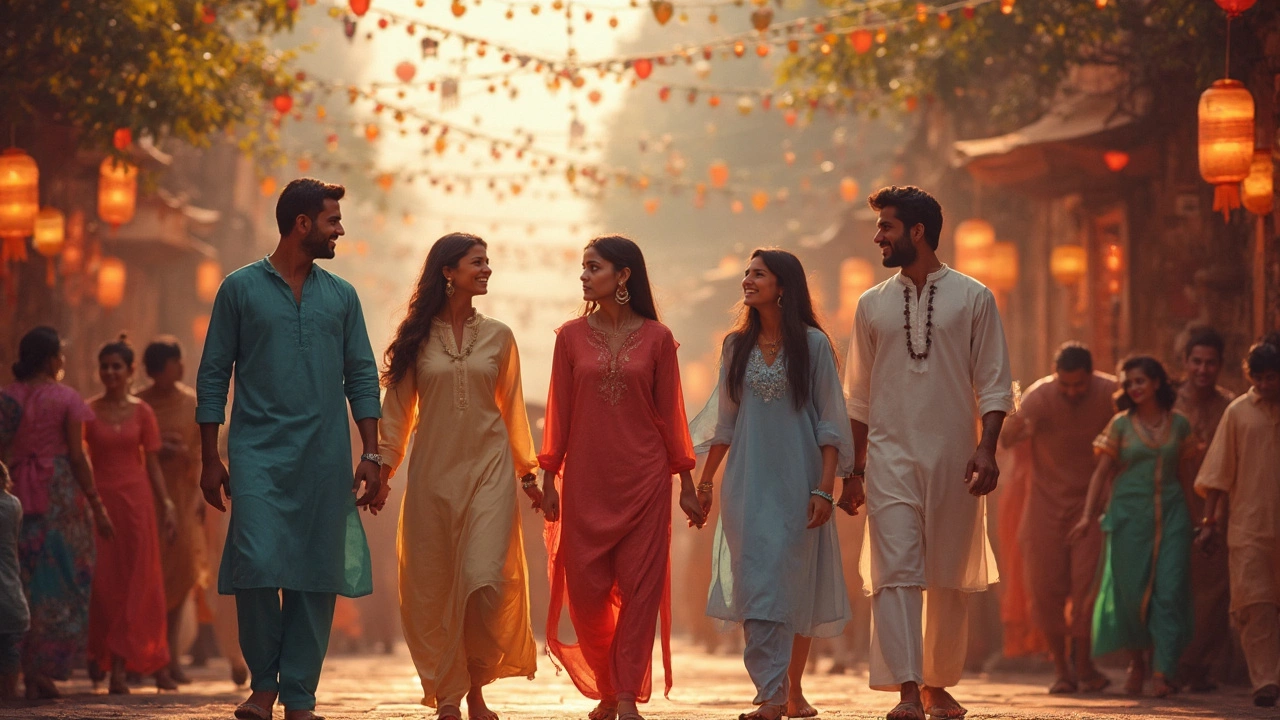Traditional Clothing: Tamil Attire, Styles, and Cultural Meaning
When you think of traditional clothing, clothing worn daily and during rituals that carry deep cultural identity, often passed down through generations. Also known as ethnic wear, it's not just fabric—it's history stitched into every fold. In Tamil Nadu, this means the veshti, a simple, unstitched dhoti worn by men, often in crisp white or off-white cotton, folded with precision for temple visits and weddings, and the mundu, a similar garment, sometimes with a colored border, worn by men and women across rural and urban Tamil communities. These aren’t costumes for show—they’re part of morning routines, religious ceremonies, and family gatherings. A man in a veshti isn’t dressing up—he’s dressing right.
Women’s traditional clothing in Tamil culture centers on the silk saree, especially the Kanjeevaram, woven with gold zari and bold colors that signal status, season, and occasion. You’ll see these at weddings, temple festivals, and even in everyday markets where older women wear them with comfort and pride. The way it’s draped—nearly always with a pleat tucked neatly at the front—isn’t random. It’s learned from mothers and grandmothers, passed on like a secret language. The fabric itself tells a story: heavier silk for winter, lighter cotton for summer, and bright reds or greens for festivals like Pongal or Thai Pongal. Even today, when young Tamil women wear jeans or salwar kameez, many still keep a silk saree in their closet—for the big days, the quiet ones, and everything in between.
What makes Tamil traditional clothing stand out isn’t just the look—it’s the meaning behind it. The veshti isn’t just a garment; it’s a symbol of simplicity, discipline, and spiritual readiness. In temples, men wear white because purity matters. In homes, women drape their sarees so the pallu covers the head during prayers—not because it’s required, but because it’s how their ancestors did it. Even the way the fabric is folded, the edge tucked just so, carries a kind of respect. These clothes don’t change with trends. They change slowly, with generations. And in a world full of fast fashion, that’s rare.
You’ll find these styles in villages near Kumbakonam, in bustling Chennai markets, and in Tamil homes across Singapore, Malaysia, and the UK. The clothes travel with the people. They’re worn at weddings in Toronto, during temple rituals in Sydney, and at Pongal feasts in Toronto. The fabric might be imported now, the weaving done by machines—but the meaning hasn’t changed. When you see someone in a veshti or a Kanjeevaram, you’re not just seeing clothing. You’re seeing a living tradition.
Below, you’ll find articles that dig into how these garments are made, why they’re worn the way they are, and how they connect to festivals, family, and faith. Whether it’s the role of silk in Tamil weddings or how children learn to drape a saree by age ten, these stories show that traditional clothing isn’t stuck in the past—it’s still being lived, every day.
